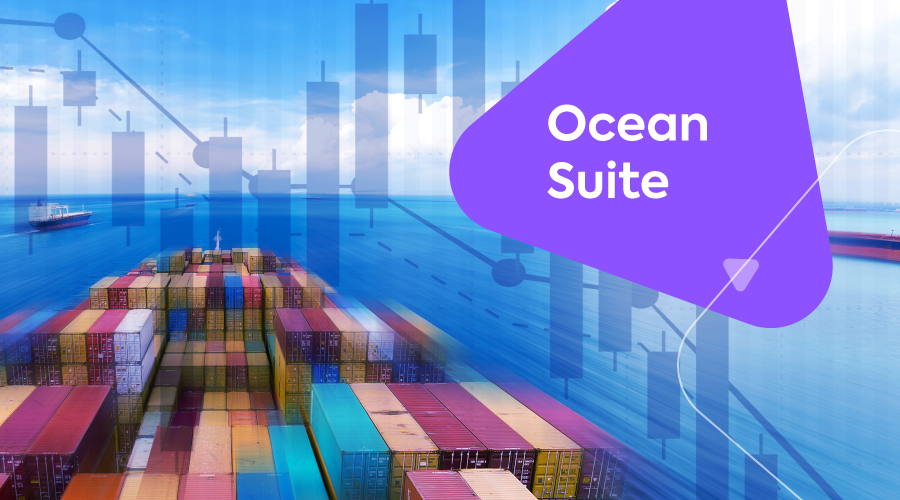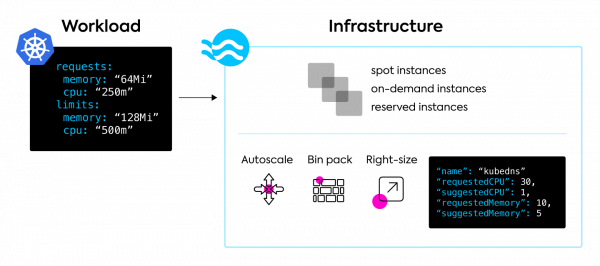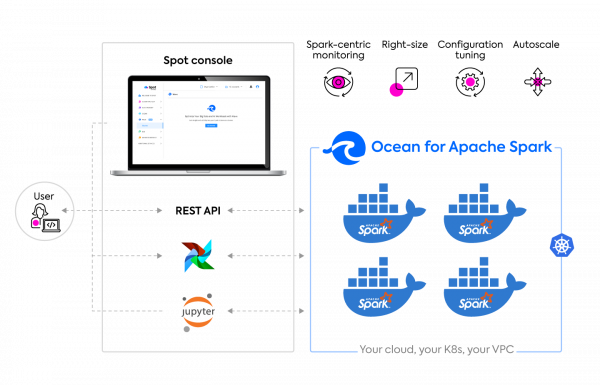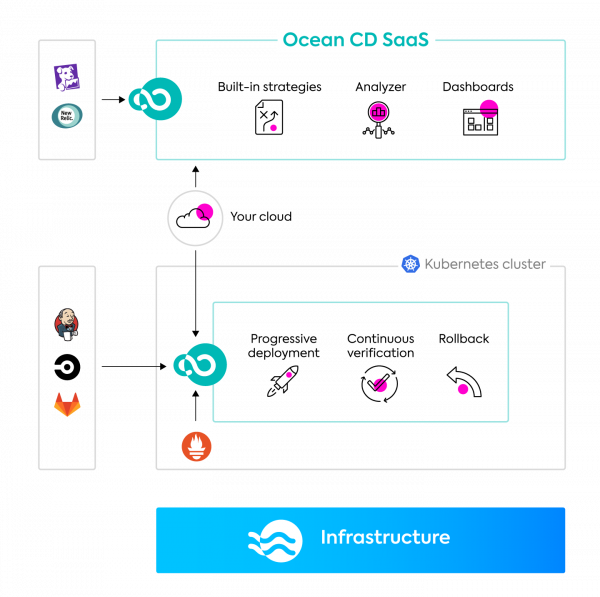
In the relatively short window of time that Kubernetes has been around, it’s rapidly matured as a critical technology foundation for the cloud, and now even applications that were previously thought to be unviable for containers are running with Kubernetes. As companies expand their usage of it, the need to operationalize Kubernetes with automation and optimization is critical to maintaining speed, agility and control in the long-term.
It turns out that one of the most significant benefits of Kubernetes–velocity–can also create some of the biggest challenges in operationalizing it. As developers deploy faster and more frequently, DevOps engineers and IT teams are spread thin trying to manage Kubernetes clusters while also supporting pipelines for hundreds of microservices, fixing bugs, and keeping environments secure. In the meantime, cloud bills are exploding and starting to erode the business value of being in the cloud in the first place.
Spot recognized some of these growing pains of Kubernetes early on, and built Ocean, our serverless infrastructure engine designed specifically for containers in the cloud. It works with your Kubernetes to automatically and dynamically provision, scale and optimize cloud resources, and takes away the burden of infrastructure management from DevOps teams. Ocean opened the door wide open for companies to take advantage of spot instances— the cloud’s biggest cost saving opportunity—without sacrificing reliability. With Ocean, you can run containers on spot instances for up to 90% cost savings, and with an enterprise-level SLA, you don’t have to worry about any downtime.
Many of Spot’s customers are entering the day 2 phase of Kubernetes, where they are now looking to make Kubernetes scalable and repeatable, and reliable enough to run in production. Spot sees a clear path to help further automate and simplify Kubernetes operations beyond infrastructure management, and improve application delivery and flexibility. Over the last few months, Spot announced two powerful new products to the Ocean family. Ocean Continuous Delivery and Ocean for Apache Spark extend our capabilities across the Kubernetes stack to streamline the critical operations of the cloud and software delivery with Kubernetes. Together, this purpose-built Kubernetes suite of tools brings intelligent, application-driven automation to fundamental processes and workflows in the cloud and drives continuous optimization of environments and systems, not just applications.
Why the Ocean Suite for Kubernetes?
Kubernetes has key features for scaling applications efficiently on immutable infrastructure, but using Kubernetes on an enterprise scale and on different kinds of applications, demands more of the container orchestrator, and more from the teams, tools and methods that we use to deploy applications across the stack. Spot’s Ocean suite is intended to solve many of the new challenges that come with operationalizing Kubernetes, from automating and simplifying infrastructure management to improving continuous deployment of containers at scale. The Ocean suite consists of:
Ocean Serverless Infrastructure: automated, optimized cloud for less
There’s less deployment complexity with Kubernetes–users define the desired state of a workload, and Kubernetes decides how to get there. Scaling the underlying infrastructure however, isn’t automated by Kubernetes and takes a lot of work to make sure resources are scaling efficiently and quickly to meet application requirements. DevOps have many decisions to make during setup and configuration of Kubernetes when it comes to cloud infrastructure, and have significant ongoing maintenance to control it. Even as high-performing DevOps teams are successfully managing infrastructure on a small scale, smart tools for automation and optimization are necessary to scale up without increasing risk, complexity and cost. Without simple ways to implement and execute processes for critical activities like resource provisioning and autoscaling, infrastructure will lag farther and farther behind, slowing down momentum of deployments while driving higher costs.
Ultimately, Kubernetes doesn’t care what kind of infrastructure containers run on, as long as it meets its defined requirements. Companies on the other hand, should care quite a bit. Cloud infrastructure mismanagement and misconfiguration can show up in the form of high cloud bills due to underutilized resources and underperforming applications because of the wrong resources.
Ocean was built to give dynamic Kubernetes applications dynamic, optimized cloud infrastructure in a completely serverless way. By plugging directly into your cloud and your DIY Kubernetes ( or fully-managed EKS / AKS / GKE), Ocean manages the data plane and automatically scales infrastructure according to the specific requirements of each container. Applications that run with Ocean can easily and reliably leverage spot instances for significant (up to 90%) cost savings on cloud compute, while advanced optimization capabilities like right sizing and bin packing continuously improve resource utilization and drive efficiency.
Ocean for Apache Spark: run big data applications on Kubernetes
Kubernetes architecture has always been appealing for big data applications, but up until recently, many thought it wasn’t mature enough to handle stateful services. As the biggest open source tool in the ecosystem, Kubernetes has evolved to make its benefits more accessible for data-centric applications, especially with its recent addition of native support for Apache Spark. Just because it’s accessible however, doesn’t mean it’s easy to achieve. Managing Spark-on-Kubernetes is tedious to set up, time consuming to maintain, and making it reliable at scale takes a lot of expertise. While trying to drive data initiatives, data teams are taking on the work of Kubernetes and all the pieces that come with it.
To make it easier to run these large-scale, distributed applications on Kubernetes, Ocean for Apache Spark is taking care of the set-up, configuration, maintenance, and optimization of Spark-on-Kubernetes applications, and its infrastructure. Spark applications get serverless, optimized infrastructure with the core Ocean capabilities for provisioning and auto scaling compute, including spot instances. With Ocean’s Spark-centric observability layer, users have visibility into application configurations, logs, Spark UI and key metrics which are hard to monitor with DIY Spark-on-Kubernetes.
Ocean Continuous Delivery: deploy faster, with more confidence
Using Kubernetes allows us to run, in isolation of each other, different applications simultaneously, using the same resources. These applications can also have different deployment strategies, and when you’re releasing new code potentially hundreds of times a day, it becomes hard work to control the sprawl of deployments to keep everything running smoothly and as expected in production. The dynamic nature of containers makes them unpredictable as they are promoted through deployment stages, and the opaqueness of delivery pipelines makes it hard to monitor, find and fix issues.
Spot’s newest product, Ocean Continuous Delivery, is purpose-built for Kubernetes and focuses on alleviating the most painful aspects of modern application delivery by automating mission-critical deployment and verification processes. Out of the box progressive delivery strategies make it easy for users to quickly execute deployments, while continuous verification processes are automated and seamlessly integrated into delivery pipelines, giving developers full confidence in their deployments.
Kubernetes doesn’t have to be so hard
By expanding the services of Ocean to more types of workloads, and to automating more layers of the Kubernetes stack, Spot is making it easier for developers, DevOps, and data engineers to build, deploy and run applications with Kubernetes at scale. The Ocean suite brings critical operational functions together in one unified Spot, where all your Kubernetes workloads are fully-managed and optimized so you can move fast, scale big, worry less and save more.
Visit the Ocean Kubernetes Suite page to get started.




